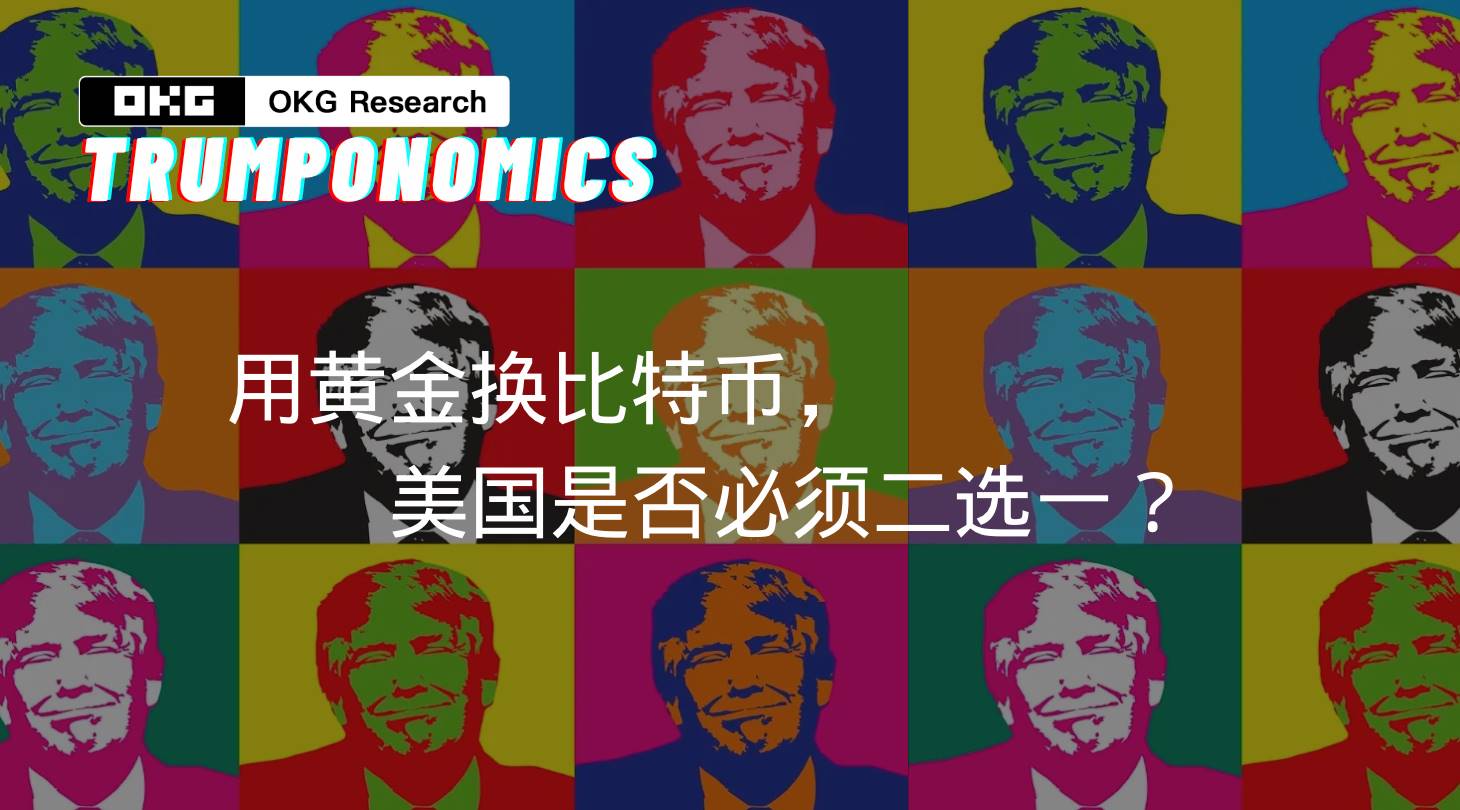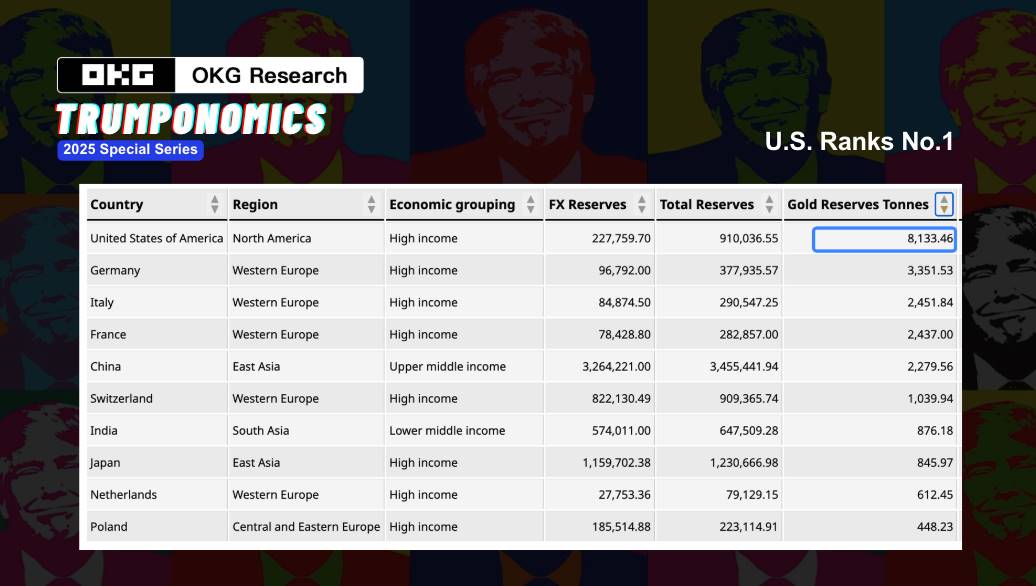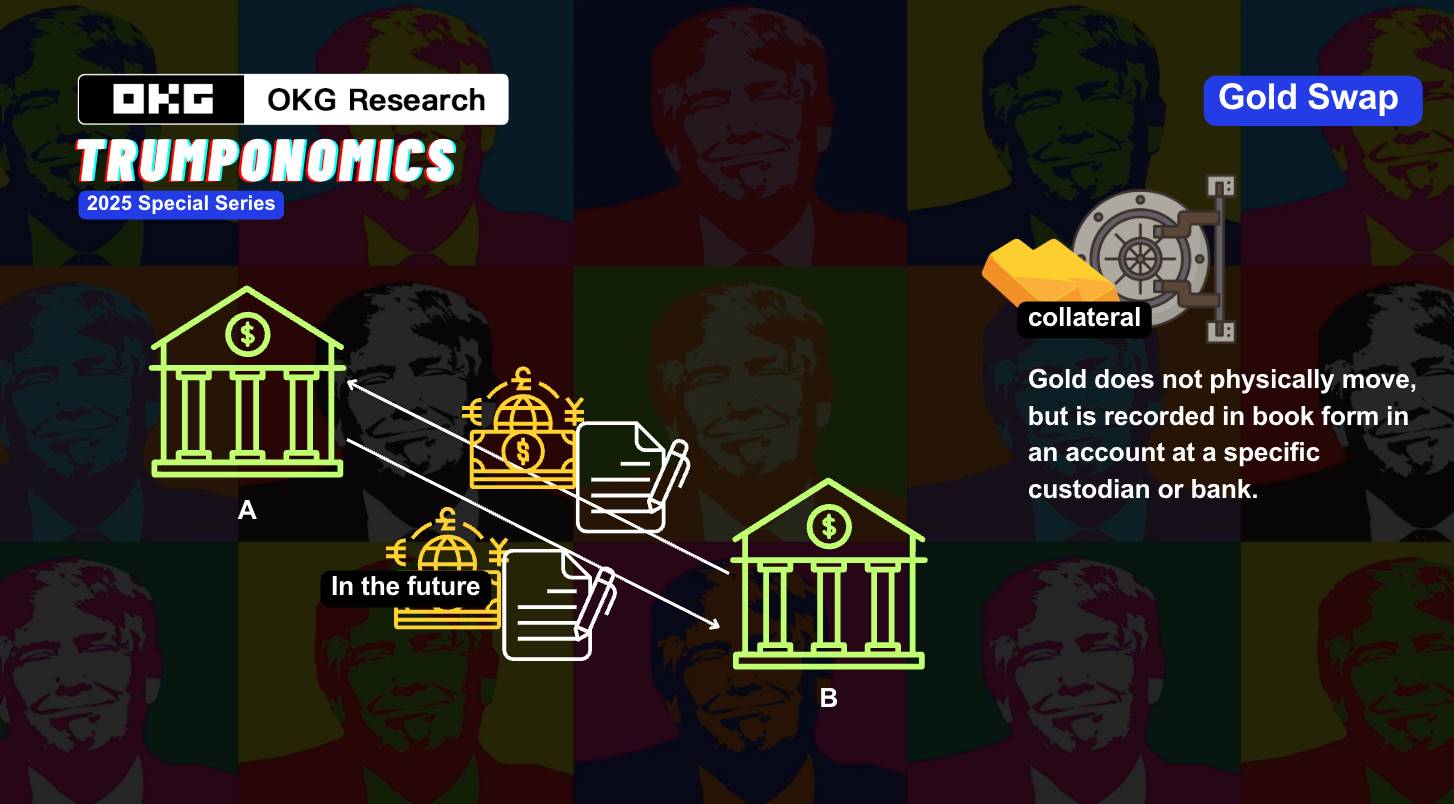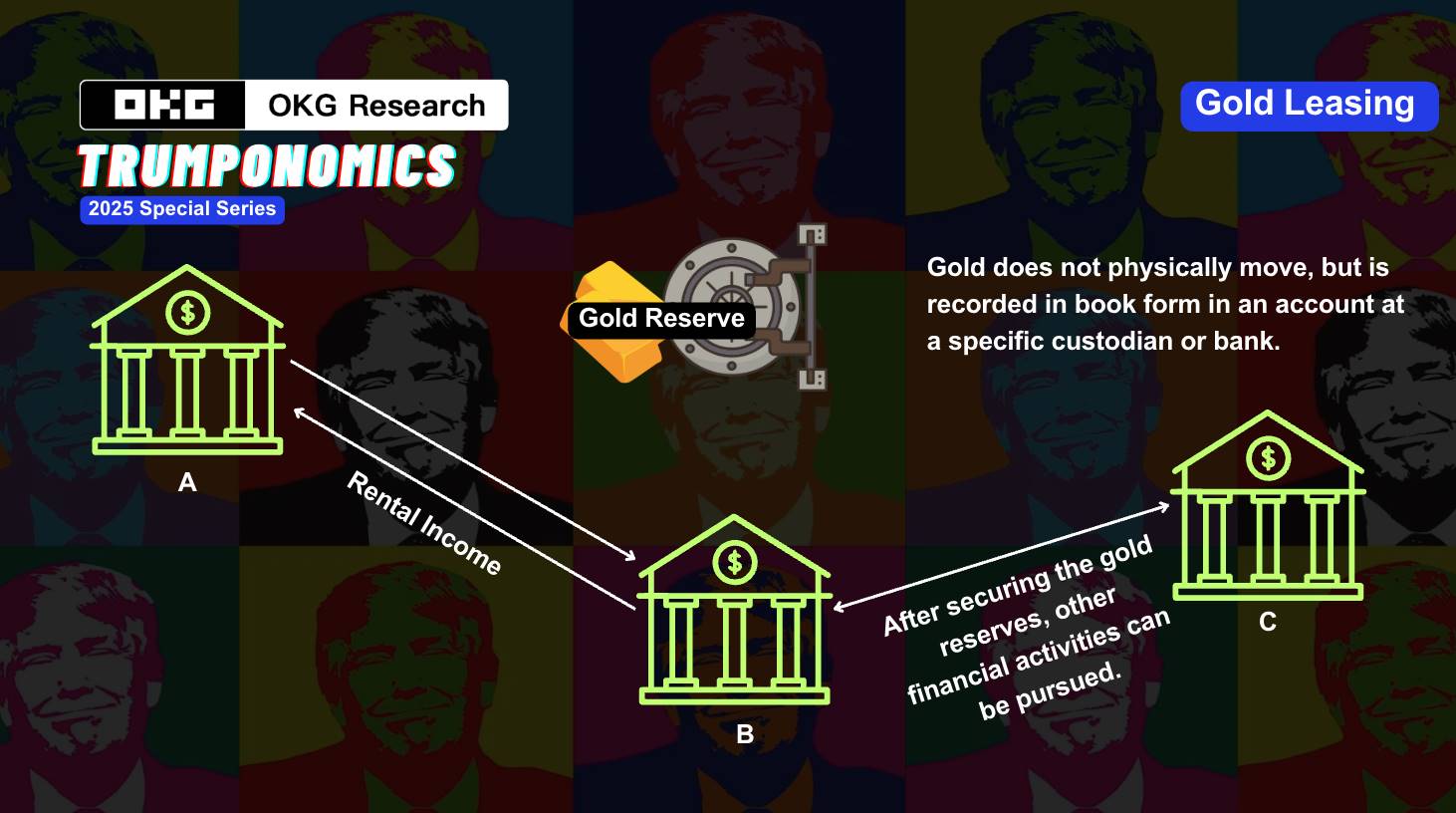This article will delve into the comparison between Bitcoin and gold, unpacking the deeper implications of this intriguing proposal from the United States.
Author/HedyBi
Planning/Lola Wang
Produced by/OKGResearch

On March 24, Bo Hines, the executive director of President Trump's Digital Asset Advisory Committee, proposed a highly controversial suggestion—using the profits from gold reserves to purchase Bitcoin, thereby increasing the nation's Bitcoin reserves in a "budget-neutral" manner. Just days earlier, the International Monetary Fund (IMF) officially included Bitcoin in the global economic statistical system. With Bitcoin being incorporated into the Balance of Payments and International Investment Position Manual (BPM7), central banks and statistical agencies around the world are required to record Bitcoin transactions and holdings in their balance of payments and investment position reports. This move not only formally acknowledges Bitcoin's influence in the international financial system but also signifies its gradual evolution from a speculative asset to a more institutionalized financial tool. From an international perspective, Bitcoin has been eligible as a foreign exchange reserve option for countries since March 20.
However, returning to the U.S. proposal, the most intriguing aspect is that the U.S. suggests using gold—marketed as the "ultimate safe-haven asset"—to exchange for Bitcoin. This proposal raises a fundamental question: Is gold still an undisputed safe-haven asset? If the answer is yes, then why, from the era of gold coins in ancient Greece and Rome to the present day, has no company adopted a similar strategy to that of MicroStrategy in the Bitcoin market to accumulate gold long-term? As policymakers around the world reassess the positioning of this emerging asset in the financial system, the U.S. has taken the lead in expressing its stance. Can Bitcoin be the first shot in a financial paradigm shift?
OKG Research will launch a special topic "Trump Economics" in 2025, continuously tracking the impact of the Trump 2.0 era on the crypto industry and global markets. This article will begin with a comparison between Bitcoin and gold, unpacking the deeper implications of this intriguing proposal from the United States.
Is the U.S. not selling real gold?
The U.S. has held the world's largest official gold reserves at 8,133.5 tons for 70 years. However, a noteworthy fact is that this gold has long been out of circulation in the market, stored in places like the Kentucky gold reserve, Denver, and the New York Federal Reserve. Since the "Nixon Shock" ended the Bretton Woods system in 1971, the U.S. gold reserves have no longer been used to support the dollar but are instead treated as a strategic reserve asset that is generally not sold directly.

Therefore, if the U.S. intends to use the "surplus from gold reserves" to purchase Bitcoin, the most likely method would be to utilize financial instruments related to gold rather than selling physical gold.
Historically, the U.S. Treasury has been able to create dollar liquidity out of thin air by adjusting the book value of gold without increasing the actual gold reserves. This method is essentially a "revaluation" of assets, which can also be seen as an alternative form of debt monetization.
Currently, the U.S. Treasury has fixed the book value of gold on its balance sheet at $42.22 per ounce, a price far below the current market price of gold—$2,200 per ounce. If Congress approves an increase in the book value of gold, the book value of the Treasury's gold reserves will significantly increase. Based on this new price, the Treasury could apply to the Federal Reserve for more gold certificates, and the Federal Reserve would provide the corresponding new dollars to the Treasury.
This means that the U.S. could implement a "hidden dollar devaluation" by adjusting the book value of gold without negotiating with other countries, while simultaneously generating substantial fiscal revenue. These newly created dollars could be used to purchase Bitcoin, further increasing the U.S. Bitcoin reserves. The fiscal revenue generated from the revaluation of gold not only provides funding support for Bitcoin purchases but may also drive increased demand for Bitcoin in a broader financial context. Stephen Ira Miran, an economic advisor to the Trump 2.0 government, cited the "Triffin Dilemma," pointing out that the dollar's status as a global reserve currency puts the U.S. at risk of long-term trade deficits. The revaluation of gold could help break this vicious cycle and avoid soaring interest rates. Without releasing excessive liquidity, Bitcoin would benefit from this adjustment.

However, while this approach may superficially encourage other institutions and investors to follow suit, attracting more liquidity into the Bitcoin market, it cannot be ignored that if the market determines that the dollar has lost credibility as a long-term trend, the global asset pricing system may change, and the price discovery mechanism for Bitcoin could become more uncertain.
The gold market has never been free
If the U.S. Treasury uses the revaluation of gold to exchange the surplus "book value" for dollars to purchase Bitcoin, the Bitcoin market may experience a short-term frenzy but simultaneously face risks of regulatory tightening and liquidity control, just as gold entered an era of "free pricing" following the collapse of the Bretton Woods system—where opportunities and uncertainties coexist in price fluctuations.
But the gold market has never truly been free.
Historically, in addition to being a safe-haven asset, gold has also played the role of a "shadow leverage" in the monetary system, with numerous examples of using gold for geopolitical maneuvering, one of the most famous being the "Gold Door Incident" of the 1970s. During that time, the international credibility of the dollar was impacted by the Vietnam War and other internal and external factors. To stabilize global market confidence in the dollar, the U.S. protected the dollar by raising the relative price of gold. Additionally, in the 1980s, the Reagan administration indirectly intervened in market prices through "gold swaps"; in the 2000s, the Federal Reserve released liquidity through the gold leasing market to maintain the dollar's strong position.
Moreover, the credibility of gold is not unbreakable. The figure of 8,133.5 tons has never been independently audited for decades, and whether the gold in Fort Knox (located in Kentucky) is intact has long been a hotly debated "black box" issue in the market. More importantly, while the U.S. government does not directly sell gold, it may manipulate its value through financial derivatives, such as the aforementioned "book adjustments," to achieve shadow monetary policy operations.
A deeper question arises: If gold is revalued to release dollar liquidity, and Bitcoin becomes a hedge against the dollar, how will the market redefine credit? Will Bitcoin truly become "digital gold," or will it, like gold, be absorbed and re-controlled by the dollar system?
Will Bitcoin become a part of the U.S. shadow monetary policy play?
If Bitcoin is indeed heading towards a fate similar to that of gold being absorbed and controlled by the dollar system, as U.S. interest in holding Bitcoin rises, the market may enter a phase where "Bitcoin becomes a shadow asset"—officially recognizing Bitcoin's value while restricting its direct impact on the existing system through policies and financial tools.
Assuming the U.S. government incorporates Bitcoin as a strategic asset and begins to accumulate it. Unlike traditional gold, Bitcoin, as a decentralized asset, cannot be directly controlled by the government in terms of supply or price. However, the government can operate in the market through shadow institutions (such as Bitcoin ETFs or Bitcoin trust funds) to indirectly influence Bitcoin's price and market sentiment.
These shadow institutions can utilize the liquidity and volatility of the Bitcoin market to accumulate large amounts of Bitcoin in a "hoarding" state, intending to release these Bitcoins at specific times to affect market supply and price trends. This operation is similar to the "gold swaps" and "gold leasing" in the gold market, not involving actual Bitcoin transactions but achieving objectives through financial tools and market strategies.


Not to mention the "bubble" of gold derivatives or the actual existence of gold: in 2011, analysts estimated that the ratio of paper gold to physical gold on COMEX could be as high as 100:1. Or the case in 2013, where the repatriation of German gold took seven years, raising speculation that the Federal Reserve might not have enough physical gold, or that some gold had been leased or mortgaged.
But will Bitcoin repeat this fate? Based on the current trends in blockchain technology development, the answer may be negative.
- The "black box" of gold vs. the transparency of Bitcoin
Bitcoin is not a "black box" operation; all transactions can be traced on the chain. The decentralized nature of Bitcoin gives it an advantage over gold in terms of transparency and auditability. As a native asset on the blockchain, all Bitcoin transactions are publicly auditable, and anyone can track the circulation of Bitcoin through on-chain data tools (such as OKX Explorer).

Additionally, the Bitcoin network is composed of decentralized independent nodes, each holding a complete transaction ledger and jointly verifying transactions, making it impossible for a single institution or country to tamper with or manipulate Bitcoin's transaction data. Bitcoin does not rely on third-party institutions for auditing. According to on-chain data from OKX Explorer, the total holdings of whale wallets (1,000+ BTC) remain at 30% to 35%, or 6 to 7 million BTC. This alone exceeds the current storage of Bitcoin in centralized exchanges' hot wallets and institutional custody and ETFs. The flow of funds in Bitcoin wallets on-chain is completely public and globally traceable.
The real-time efficiency is far superior to most countries' quarterly or annual updates of gold reserve reports, and there will be no repeat of the situation where the U.S. lost seven audit reports of the gold in Fort Knox. Due to the lag in reserve reports, the market's response to these changes is often delayed.
- Financial run risk vs. Bitcoin's risk resistance
One of the issues with the traditional financial system is the centralized management model of banks and financial institutions, which brings systemic risk. For example, during the 2008 financial crisis, the collapse of Lehman Brothers triggered a chain reaction, and the bankruptcy of Silicon Valley Bank (SVB) in 2023 again made the market aware of the fragility of the banking system. When liquidity panic occurs in the market, banks may face large-scale runs, while the traditional financial system relies on government emergency bailouts and Federal Reserve monetary policy interventions to maintain stability.
Even Bitcoin stored in centralized exchanges has technical means to prove the actual storage situation of these exchanges. OKX officially launched its Proof of Reserves (PoR) program on November 23, 2022, positioning it as a core tool for transparency and user protection. Excess PoR (i.e., PoR greater than 100%) means that the assets held by the exchange or custodian not only cover all user deposits but also reserve an additional proportion of funds. This excess portion can act as a safety buffer, ensuring that even in extreme market fluctuations or unexpected losses of certain assets, the institution still has enough reserves to meet all user withdrawal demands. This avoids the "fractional reserve" model seen in traditional banking systems. In contrast, banks in the traditional financial system typically have reserve ratios far below 100%, and once a crisis of trust erupts, banks face severe liquidity issues.
The strategy of revaluing gold in the U.S. to create "new" dollars and then using these funds to purchase Bitcoin not only represents a shadow monetary operation but also exposes the fragility of the global financial system. Whether Bitcoin can truly become an independent and free "digital gold" in this process, rather than merely an appendage of the U.S. financial system, remains to be seen. However, from a technical perspective, both the real-time queryable transactions on the blockchain and the PoR of centralized institutions provide a new solution for the traditional financial system. The proposal to exchange gold for Bitcoin opens a profound dialogue about the future financial system.
免责声明:本文章仅代表作者个人观点,不代表本平台的立场和观点。本文章仅供信息分享,不构成对任何人的任何投资建议。用户与作者之间的任何争议,与本平台无关。如网页中刊载的文章或图片涉及侵权,请提供相关的权利证明和身份证明发送邮件到support@aicoin.com,本平台相关工作人员将会进行核查。




